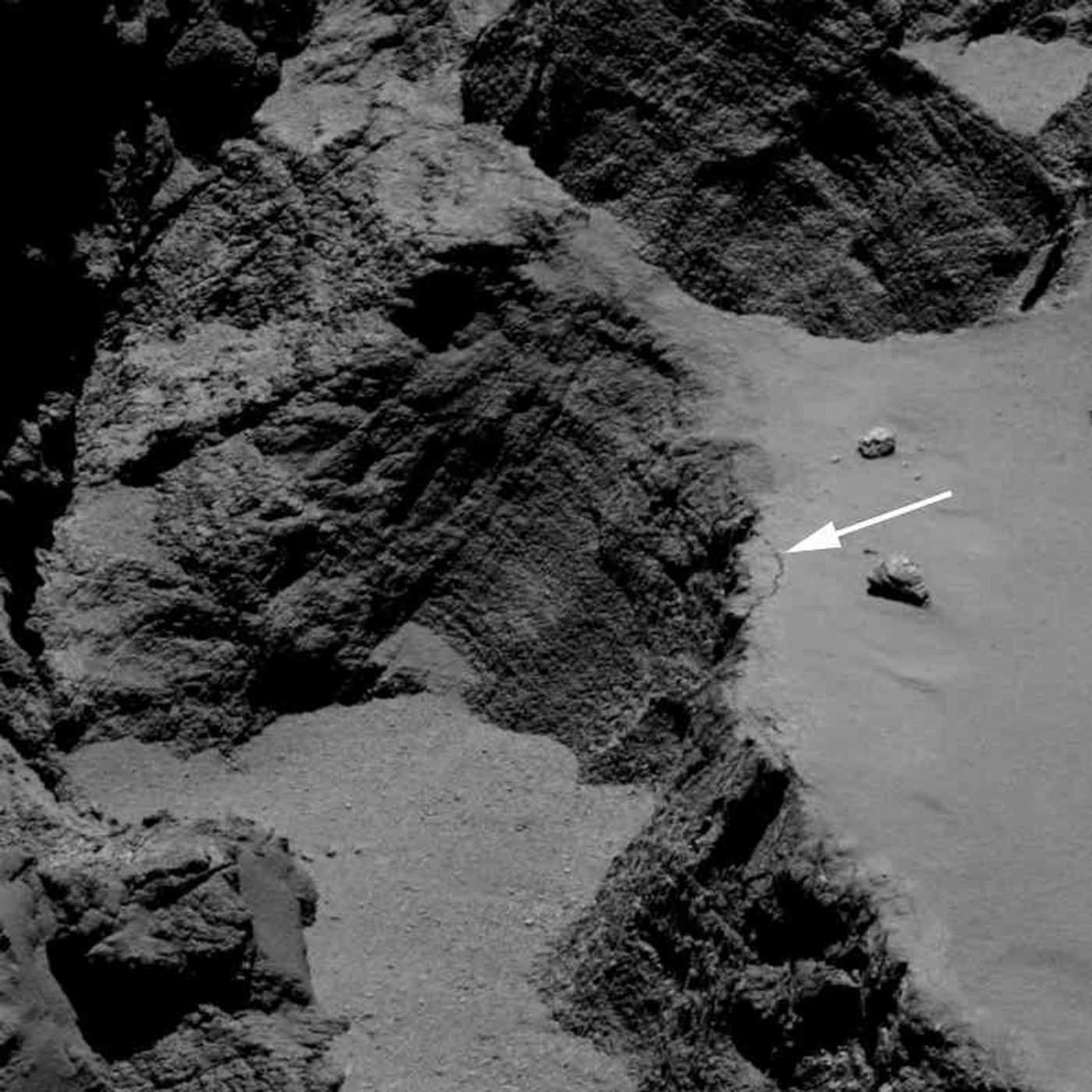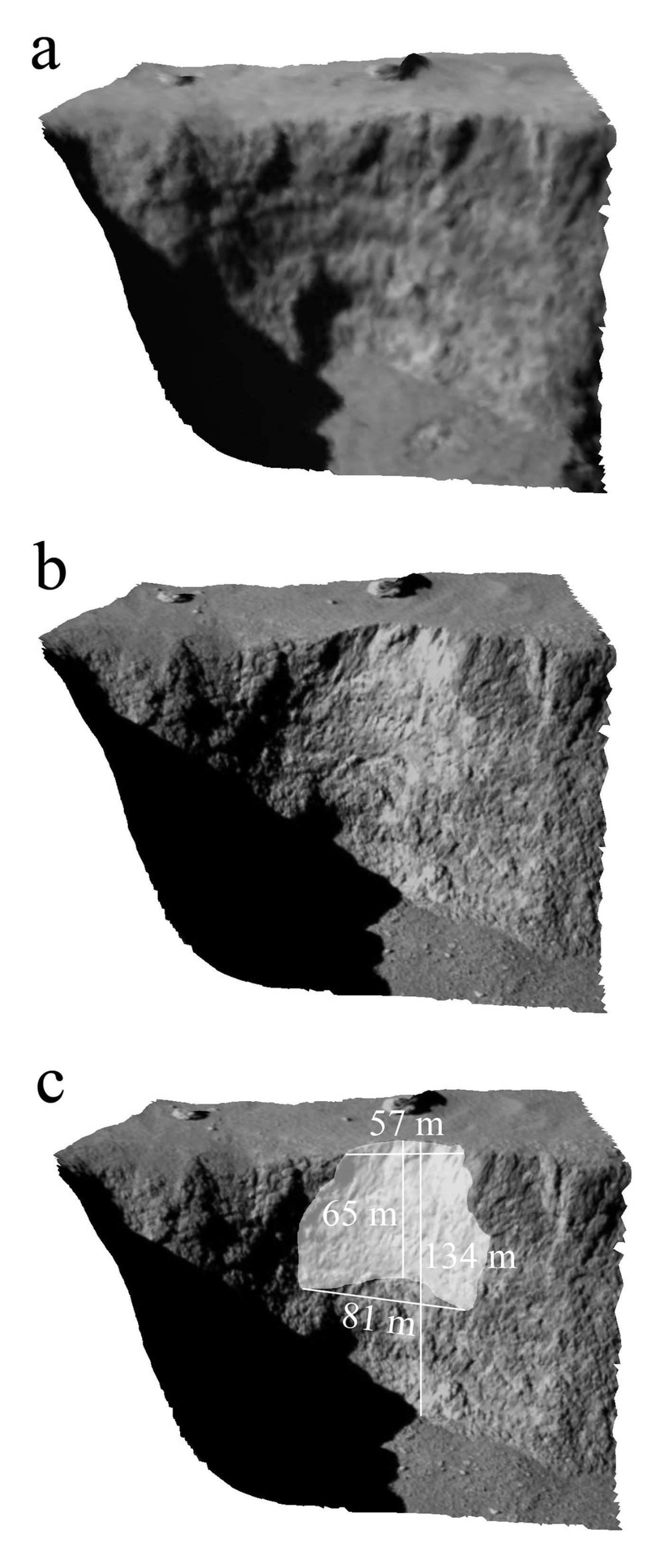Landslide on Comet 67P May Answer Many Questions
When precariously-perched rocky material on comet 67P’s Aswan cliff lost its balance and tumbled down from the top, the landslide left something behind that scientists weren’t exactly expecting to see.
Observations made by the (now retired) Rosetta mission back in 2015 have been described in the journal Nature Astronomy. They reveal how after the cliff rocks tumbled, a shiny icy surface was left behind that gave scientists their first look into the material on the inside of a comet, as well as some insight into the mysetrious plumes comets seem to give off.
Rosetta had spotted a giant crack in the surface of the cliff estimated to be around 70 meters wide some time before the event occurred, but it wasn’t until it was noticed missing the next time Rosetta’s cameras passed it and after a plume appeared in the same general area that scientists were able to put two and two together.
Image Credit: MPS for Osiris Team/Rosetta/ESA via The Guardian
It’s believed that constant exposure to wide ranges of Sunlight while the comet entered Perihelion, which is the point in its orbit around the Sun where it gets the closest to the star, was the primary cause of the landslide in the first place.
The now-bare region of 67P provided scientists with a rare look into what’s actually under the surface on a comet, and it seems that the shininess may come from the patches of ice that were hidden underneath the rocks for so long.
Image Credit: ESA/Rosetta/MPS for OSIRIS Team
Also read: This is why comet 67P has such a weird shape
“The most exciting thing is that physically we have seen the interior of the comet,” said study lead author Maurizio Pajola from the NASA Ames Research Center in California.
“Together with an international team of over sixty coauthors from thirty-four institutions, including NASA and other space agencies, Pajola discovered humanity's closest-ever look at the inside of a comet. “It is the first time that we are seeing something like that.”
The landslide kicked up a ton of dust and debris, which were lost to space and caused the geyser-like plume. The chain of events also suggests that perhaps the reason scientists see so many plumes on comets as they get closer to the Sun is because the heat from Sun exposure causes reactional shifting similar to this circumstance, resulting in landslide-like scenarios.
“This is the most compelling evidence that we have that the observed outburst was directly linked to the collapse of the cliff,” Pajola continued.
While the data isn’t particularly new and the European Space Agency ended the Rosetta mission back in September of 2016, scientists are still perusing through the data they were lucky enough to capture at the time, as we still have a lot of unanswered questions about comets.
It should be interesting to see what else can be discovered from our existing stockpiles of data.
Source: The Guardian










